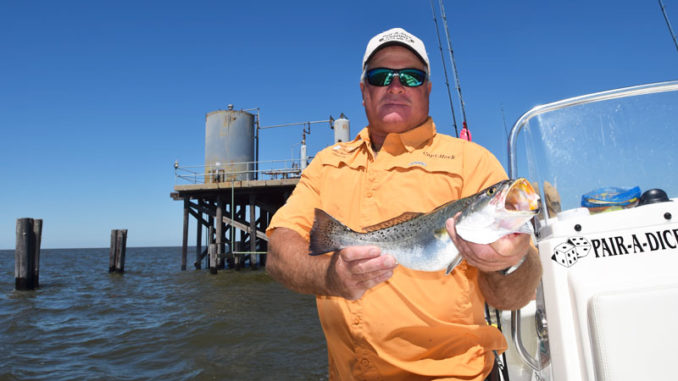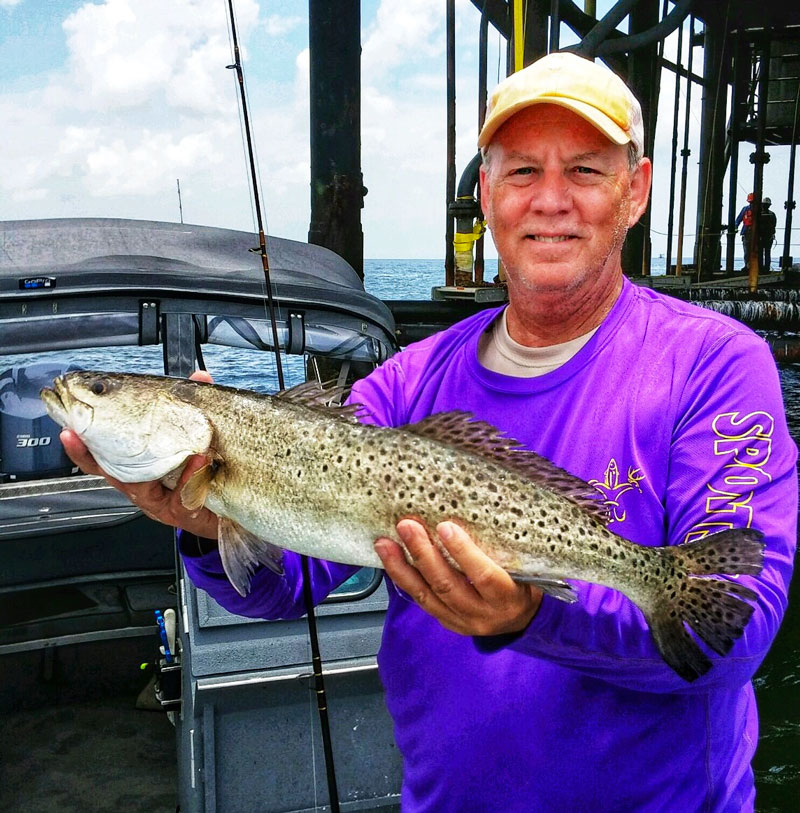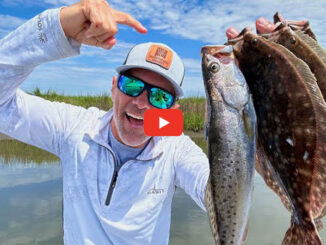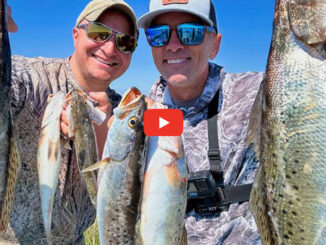
The engineers who designed all of the well heads, tank batteries and oil rigs that dot the state’s near-shore waters probably never thought once about all the fish that would be drawn to their structures.
But these towers of tangled steel are more attractive to trout than a 9-pound sow dressed in high heels and a leather mini-skirt.
That’s because the intricate and complex design of the structures gives baitfish plenty of shadowy crevices in which to hide as well as escape from fierce currents.
Anglers most often begin their search for trout at a rig by fishing the downcurrent side, but when tides are particularly swift, trout will typically congregate on the upcurrent sides of rigs.
Scientists aren’t exactly sure why trout — and many other fish species — do this, but it probably has to do with competition, said Jerald Horst, retired LSU fisheries biologist.
“The upcurrent side of the rig is the first place to intercept creatures that are drawn to the structure,” he said. “A trout doesn’t exactly have a high IQ, but he’s competitive enough to want to stay ahead of the pack.”

Horst pointed out that this sometimes leads trout to position themselves 100 feet or more upcurrent of the structure.
During times of swift current, Horst explained, there will be an eddying effect even on the upcurrent side of the rig because the rushing water encounters water that has been blocked by the actual structure. This tends to disorient bait, which is advantageous for trout.


